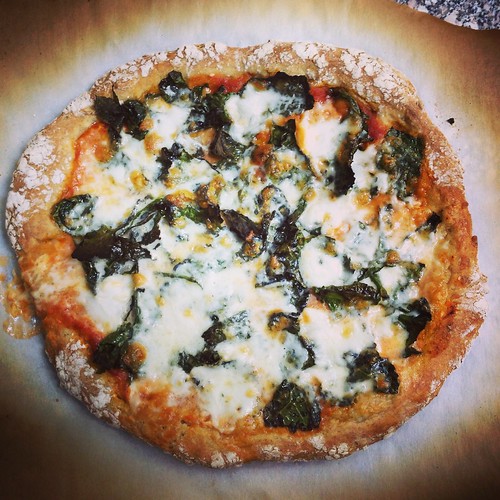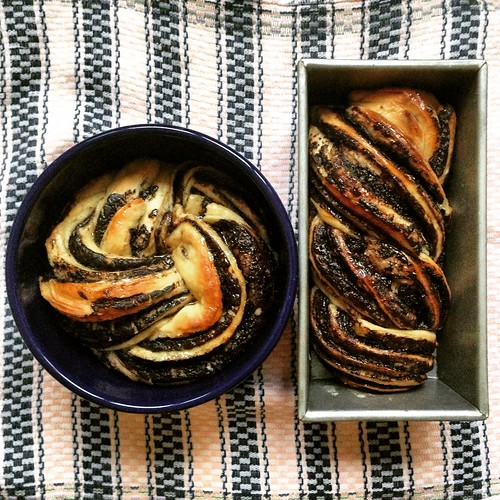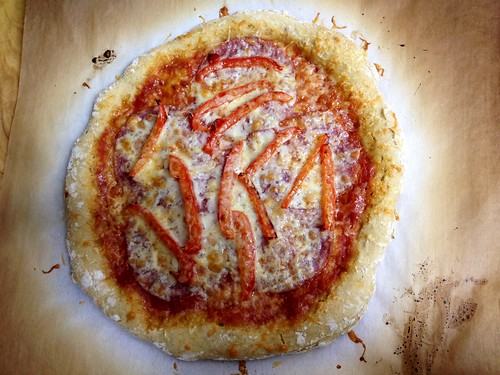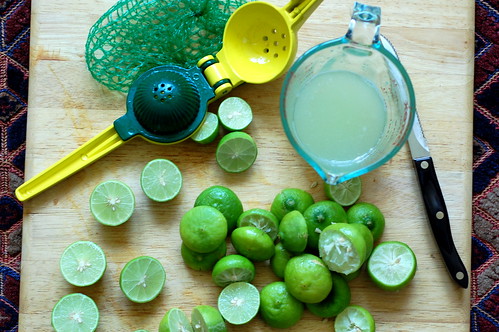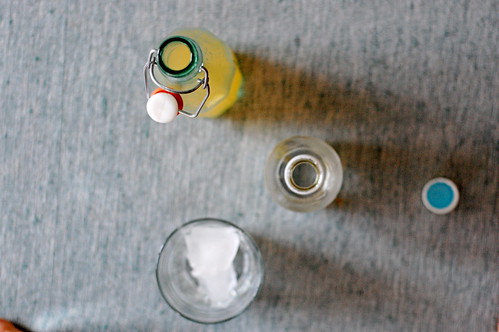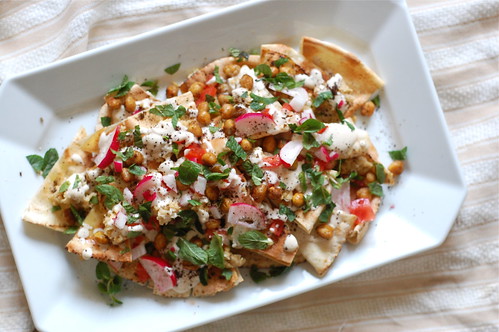
I'll admit, these last few weeks have me in some sort of crabby baby-land funk. It's 117 degrees outside, I'm six months pregnant, and I live in Egypt. What I wouldn't give to be able to wear a pair of shorts right now, or breathe clean air, or see a proper beach, I can't even tell you. We are also over due for a vacation -- we've had a few side trips here and there, most of them packed with things like long flights or freezing cold walks across England -- but I haven't had a proper relax and hang-out vacation since last summer (I even worked over Christmas) and I'm starting to feel the effects. But shining like a big bright light on the horizon: three weeks off in September to hang out at home in Chicago, get the house ready for baby, and see a couple dear friends get married. I can't wait!
My cooking has been in a similar sort of funk. There have been a lot of taco nights, ie the best way to use up odds and ends in the fridge, pasta with pesto, and snacking on Egyptian mangos with vanilla ice cream. So far we've counted at least five varieties of local mangos. Maybe I should do a taste test of mangos for the blog? That might be fun.
Still, there have been some highlights: a sweet friend in DC telling me she has our due date on her calendar, the traffic cops that always stop traffic immediately for me as I approach an intersection. A colleague of mine kindly told me that buying baby things is one of the most exciting things in the world, and that it sucks that the mail system here is so frustrating. (I was complaining about the mail we get from the U.S., which only comes about once randomly in a month, and it can take up to 6 weeks for things to arrive.) I'm making curtains for the nursery and a little blanket. Despite my cooking funk, I made zucchini cupcakes with cream cheese frosting for the office. Paul has been awesome, finding a local place for prenatal massage, or pointing me towards a good yoga video, agreeing to paint the super intricate stencils I want on the nursery wall, and smartly ignoring me when I freak out about which bassinet we should get.
I've been trying to pack healthy lunches for myself, since one can't live on koshary alone and I already have the Lebanese place on speed dial. This pea and mint tart was something I came up with that could be healthy and portable, and also use up the half bag of peas that are always lurking in the freezer. It's vibrantly green and delicate in texture and keeps nicely for a few days in the fridge.
Pregnancy corner: I don't want this blog to be taken over by pregnancy stuff, but a couple of you wrote to me saying you are also pregnant (congrats!) and I thought I'd keep this little bottom corner for things I've found useful. Right now, this prenatal yoga video is great -- I've been surprised at how many are super boring and I even found a few online that the yoga instructor in me thought were unsafe. Also, flowy Anthropologie dresses are great for maternity clothes that aren't actually maternity. I started making a list of recipes to make ahead and freeze over here. Besides the usual casserole type things, I'm thinking things like little baked meat pies with roasted tomato soup are both freezer friendly, healthy, and make one-hand meals.
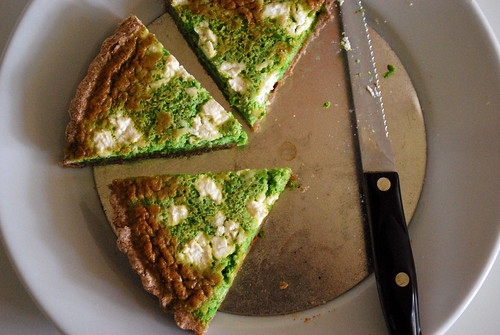
Pea and Mint Tart
tart crust for a 10" tart pan*
2 cups peas
3 eggs
2 tablespoons heavy cream
leaves from 1 sprig of mint
1/4 cup grated parmesan
2 ounces goat cheese
2 strips of bacon, cooked and crumbled
salt, pepper
1. Preheat oven to 400F. Prepare and roll out tart dough and fit it into the pan. Refrigerate tart dough.
2. Place peas, eggs, cream into the bowl of a food processor. Process until well combined. Season well with salt and pepper, and add the cream, mint and parmesan. Pulse a few time to combine the mixture and break up the mint slightly.
3. Place tart crust on a baking sheet. Crumble the bacon in the bottom of the tart crust. Pour the filling in. Crumble the goat cheese over top.
4. Bake for 35-45 minutes, or until top is lightly browned. Let cool slightly before serving.
* I used this recipe, doubled, without the vege oil or sugar and with half whole wheat flour.

